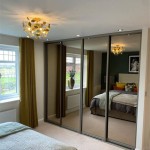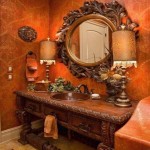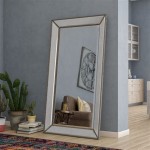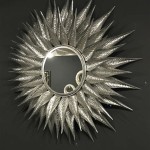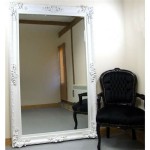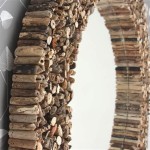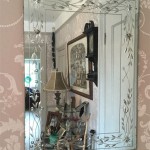How To See Through a Two-Way Mirror
Two-way mirrors, also known as one-way mirrors, are fascinating optical devices that create the illusion of transparency from one side while appearing reflective from the other. This unique property makes them invaluable in various applications, from security surveillance and psychological research to entertainment and architectural design. Understanding how these mirrors work and, more importantly, how to identify them, can be crucial for personal privacy and security.
Lighting Disparities: The Key to Detection
The functionality of a two-way mirror hinges on the difference in light levels between the two sides. A two-way mirror is typically a sheet of glass coated with a thin layer of reflective material, often a metallic film. This coating is semi-transparent, meaning it reflects some light and transmits the rest. When one side is brightly lit and the other is dimly lit, the reflection from the brighter side dominates, making the mirror appear reflective. Conversely, if the lighting on both sides is relatively equal, the mirror becomes more transparent, allowing some degree of visibility through it.
This principle forms the basis of the most reliable method for detecting a two-way mirror. Observe the difference in lighting between your side and the suspected mirror's other side. A significant difference in brightness strongly suggests the presence of a two-way mirror.
The Fingernail Test: A Quick and Easy Check
A simple yet effective method for distinguishing between a regular mirror and a two-way mirror involves using your fingernail. Place the tip of your fingernail against the surface of the mirror. With a standard, second-surface mirror, there will be a noticeable gap between your fingernail and its reflection. This gap is caused by the layer of glass separating the reflective surface from the front of the mirror.
However, with a first-surface mirror, like those sometimes used in two-way mirror constructions, your fingernail will appear to directly touch its reflection. This is because the reflective coating is on the front surface of the glass, eliminating the gap. While this test can be helpful, it’s important to remember that not all two-way mirrors are first-surface mirrors, so a gap doesn't necessarily rule out a two-way mirror.
Using a Light Source: Illuminating the Truth
Another effective technique for detecting a two-way mirror involves using a bright light source, such as a flashlight or the flashlight function on a smartphone. In a darkened environment, shine the light directly onto the surface of the suspected mirror. If it is a two-way mirror, some of the light will pass through to the other side, potentially revealing the hidden observation area.
This method works because the bright light overcomes the reflection from the brighter side, allowing some light transmission through the semi-transparent coating. This can illuminate the room behind the mirror, making it visible from the viewing side. Observing the reflected light can also be helpful. A regular mirror will reflect most of the light back, whereas a two-way mirror will reflect less light and allow some to pass through.
Cupping Your Hands and Peeking: Enhancing Visibility
Cupping your hands around your eyes and placing them against the mirror's surface can enhance visibility through a two-way mirror. This technique minimizes light interference from the surrounding environment and concentrates your vision on the light passing through the mirror from the other side. While this method may not be as definitive as the light test, it can be useful in situations where a strong light source is unavailable.
This method works by blocking out ambient light, allowing your eyes to better adjust to the dim light potentially filtering through from the other side of a two-way mirror. It's similar to how cupping your hands around a camera lens can help reduce glare and improve image quality in bright conditions.
Observing the Surroundings: Identifying Telltale Signs
Beyond direct observation of the mirror itself, examining the surrounding environment can also yield important clues. Look for unusual features such as seemingly unnecessary light fixtures, suspiciously placed cameras, or wires and cables that might be connected to surveillance equipment behind the mirror. These subtle indicators can often betray the presence of a hidden observation area.
Architectural inconsistencies can also be telling. Look for walls that appear unusually thick or sections that appear incongruous with the overall layout of the room. These discrepancies could indicate the presence of a concealed space behind a two-way mirror.

How To Detect A Two Way Mirror Fingernail Test

How A Two Way Mirror Works

Acrylic Pmma 2 Way See Thru Mirror 3 0mm Thickness

Two Way Mirror Mirrorworld

Glass Two Way Mirror In Stock Custom Sizes Worldwide

See Thru Two Way Mirror Acrylic Plexiglass Sheet C Plastics Center

How To Tell If A Mirror Is Two Way Or Not Homestead Survival

Two Way Mirror 2 Acrylic Sheets
Is It Glass Or A Two Way Mirror The Balancing Act

One Way See Through Mirror Two Mirrors For Whole China Glass Curtain Wall Made In Com

